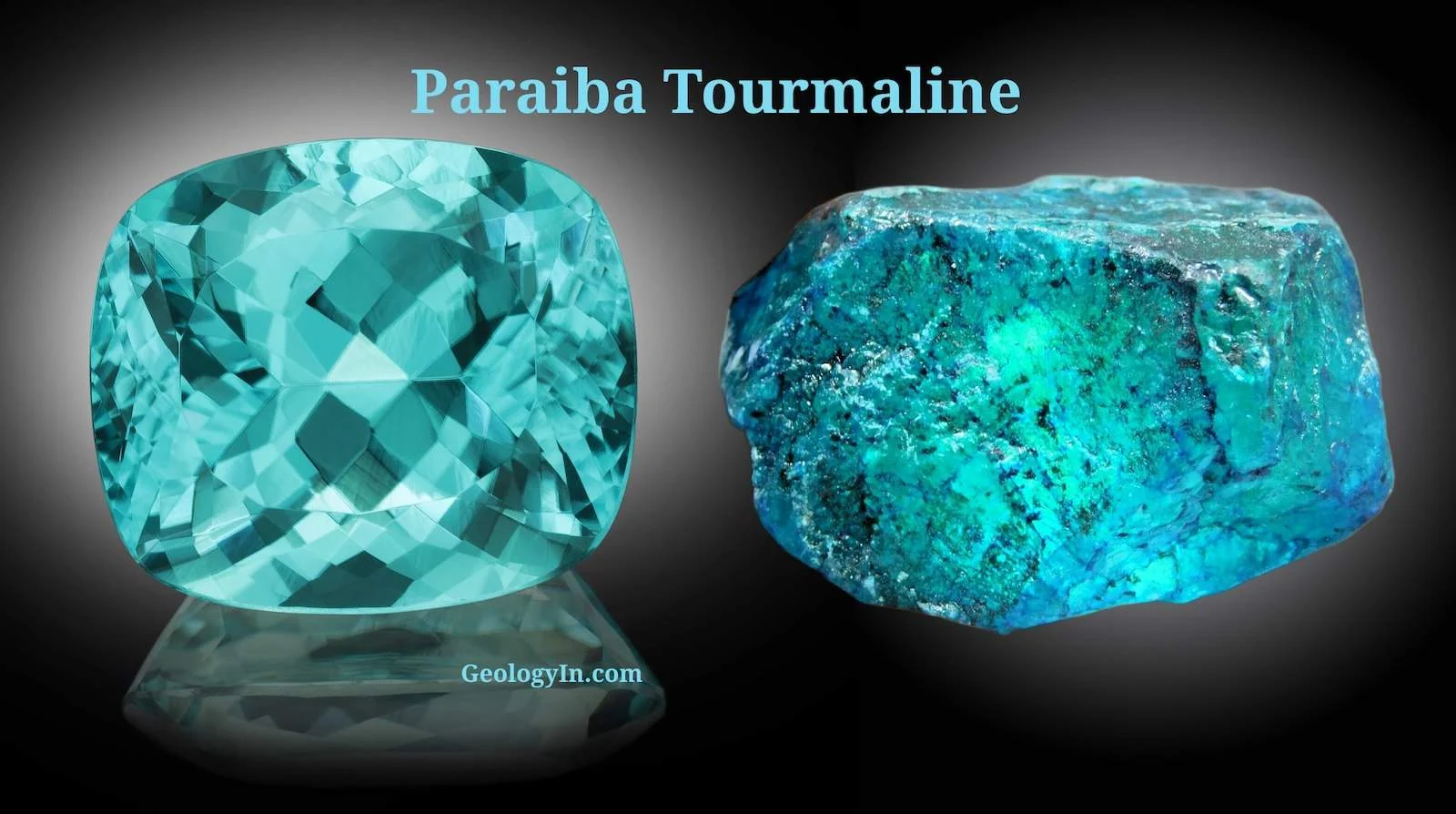What is Paraiba Tourmaline
Paraíba tourmaline is a copper-bearing variety of tourmaline known for its intense neon blue, green, and turquoise colors. Its intense glow results from trace amounts of copper (Cu²⁺) and, in some specimens, manganese (Mn) within the crystal structure. This combination of elements gives Paraíba tourmaline its distinctive brilliance, setting it apart from all other tourmalines and establishing it as one of the world’s most valuable gemstones.
First discovered in 1989 at the Mina da Batalha in São José da Batalha, Paraíba state, Brazil, by miner Heitor Dimas Barbosa. Since then, copper-bearing tourmalines with similar characteristics have been found in Nigeria and Mozambique, as well as in Brazil's Rio Grande do Norte state. While these stones share the same copper-induced glow, collectors and connoisseurs often reserve the term "Paraíba tourmaline" for gems from Brazil, especially those from the original Paraíba locality.
Today, Paraíba tourmaline is regarded as one of the world's most valuable gemstones. Fine-quality stones can reach or exceed the prices of top diamonds and rubies, making them highly sought after by jewelers, collectors, and gem enthusiasts worldwide.
 |
| Rough paraiba tourmaline crystal with terminations alongside a faceted cut stone, both exhibiting vibrant neon blue-green hues from copper (Cu²⁺) impurities. |
Paraiba Tourmaline Formation
Paraiba tourmaline crystallizes in pegmatites, which are coarse-grained igneous rocks formed from the final stages of magma crystallization. Its unique color comes from trace elements of copper and manganese incorporated into the crystal structure during formation. Unlike most tourmalines, which acquire their colors through iron, manganese, chromium, or vanadium, Paraiba tourmaline derives its signature neon glow from copper.
Paraiba Tourmaline Properties
- Color: The most prized Paraiba tourmalines boast vibrant neon shades of blue and green, with occasional turquoise and violet hues. These colors primarily arise from traces of copper and manganese.
- Luster: Vitreous (glassy) to sub-vitreous (slightly duller glass).
- Transparency: Transparent to translucent.
- Hardness: 7-7.5 on the Mohs scale (moderately hard, can scratch glass).
- Crystal System: Hexagonal.
- Chemical Composition: Complex sodium lithium aluminum borosilicate with additional elements like copper and manganese.
- Density: 2.84-3.10 g/cm³ (moderately heavy).
- Fracture: Conchoidal or uneven (tends to break with smooth, curved or irregular surfaces).
- Cleavage: None (difficult to split in a predictable direction).
- Luminescence: Weak fluorescence may be present in some specimens.
 |
| Paraiba (cuprian) Tourmaline on Quartz From: Batalha mine, Junco do Serido, Paraíba, Brazil Photo: Mineral Auctions |
Gemological Properties
- Pleochroism: Strong, with colors shifting from blue to green depending on viewing angle.
- Refractive Index: 1.603-1.655.
- Double Refraction: High.
- Dispersion: High (creates lively fire).
Paraiba Tourmaline Rarity
Paraiba tourmaline is one of the rarest gemstones in the world, with an estimated ratio of one Paraiba mined for every 10,000 diamonds. The primary source of Paraiba tourmaline is Brazil, with deposits in the states of Paraíba and Rio Grande do Norte. Smaller deposits exist in Mozambique, Nigeria, and Namibia, but these are less significant and produce fewer high-quality stones.
 |
| Brilliantly faceted Paraiba tourmaline gemstone from Brazil. |
Paraiba Tourmaline Value
Paraiba tourmaline is one of the most expensive gemstones in the world, with prices exceeding those of most diamonds. This is due to its rarity, vibrant color, and increasing demand.
Price Range:
- Small (0.20-0.99 carats): $150 to $15,500 per carat.
- Medium (1.00-1.99 carats): $550 to $30,000 per carat.
- Large (2.00+ carats): $950 to $55,000 per carat, with exceptional stones reaching $100,000+.
Several factors influence the price tag:
- Color: The vibrant neon hues command the highest prices,
- Size: While larger stones are rarer and often more expensive.
- Clarity: Eye-clean Paraibas with minimal inclusions are more valuable than those with noticeable flaws.
- Origin: Brazilian Paraibas typically command premium prices due to their historical significance and exceptional quality.
 |
| Neon Paraiba Tourmaline Gemstone |
Why is Paraiba Tourmaline So Expensive
Paraiba tourmaline's astronomical price hinges on extreme rarity, surpassing even diamonds. Its vibrant neon hues, unmatched in intensity, and strong investment potential make it a collector's dream. Each stone, a masterpiece of nature, commands a premium due to limited supply, captivating color, and potential for value growth.
 |
| Paraiba Tourmaline Ring and Earring |
In conclusion, the rarity of Paraiba tourmaline, coupled with its unique and captivating colors, limited sources, and the challenges associated with mining and treatment, contribute to its high market value. As a result, this gemstone has become a symbol of luxury and exclusivity in the world of fine jewelry.
Read also:
Tourmaline: The Colors and Varieties of Tourmaline
Watermelon Tourmaline: What Is Watermelon Tourmaline
Rubellite - Properties, Value, Occurrence and Uses








